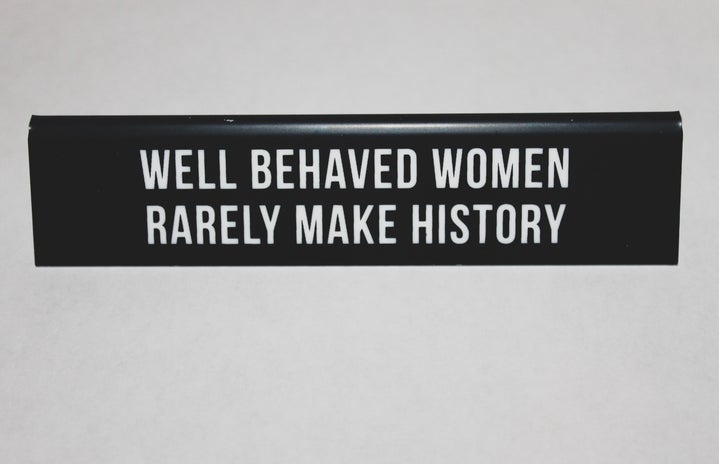I never liked Barbies.
This pencil-thin, blonde bombshell with extravagantly colored clothing riding around in a pink Cadillac did not inspire me.
Kit, Samantha and Felicity, otherwise known as the American Girl dolls, were much more my speed. I inherited a sizable collection from my older cousins, which – judging from the looks of these raggedy, grimy, marker-tattooed dolls – received the kind of tender loving care comparable to prisoners of Alcatraz.
Molly’s eye would never quite straighten out. Felicity had lost large chunks of her red, bushy hair. Kirsten suffered from a loose leg that would inconveniently dislocate every time she moved. My broken, bruised and battered dolls possessed none of Barbie’s signature glam and fabulousness.
But none of it mattered. It didn’t matter that this ragtag crew of hand-me-down dolls didn’t have couture clutches, hot pink stilettos or even fundamental body parts. These girls inspired my heart and bolstered my own unflappable determination. Kit loved writing newspaper articles and maintained an unfailingly positive spirit despite growing up during the Great Depression. Samantha never treated anyone differently because they were less fortunate. Felicity stood up to bullies with the kind of fearlessness usually reserved for male characters.
At eight years old, I lacked the mature insight necessary to comprehend my aversion to Barbie’s spindly long legs and cookie-cutter narrative. I just felt inexplicably drawn to my American Girl dolls and could not put a finger on why. But with the sagacity of nineteen years lived, I can now reflect on these bygone days and clearly identify the birthplace of my nascent feminism: those serene Saturday mornings sitting on my nylon carpet and playing with Kit and Molly.
When asked to name the most motivating and impactful female role models in our lives, I seriously doubt that the dolls we used to play with as children would be the first to come to mind. Mothers, sisters, third grade teachers and national leaders can absolutely embody paragons of womanhood and female excellence. These influential women in our lives can tell us – or better, show us – the kind of trailblazing, high-achieving and gracious women we can be, but the movies, books and even toys we are exposed to throughout our lives can determine how profoundly these messages resonate.
I hated my mom when she told me I couldn’t watch “Twilight” like all of my friends, and I descended into a quintessential fourth grade meltdown – the stuff of nightmares. She insisted that Bella Swan did not exemplify a strong female role model and instead perpetuated the helpless heroine archetype, willing to throw her life away to be with her shiny vampire boyfriend.
“Just because I watch ‘Twilight’ doesn’t mean I’ll turn into that type of girl!” I begged with endless ferocity, to no avail.
In her infinite wisdom, my mother knew the depth to which the characters we read about can transform the way we perceive a woman’s role in society and what she can and should be able to achieve at an extremely formative age. But as little girls grow into independent young women, the responsibility of evaluating potential role models and influencers falls in their laps.
I am in no way endorsing self-censorship. Don’t neglect reading “The Great Gatsby” just because Daisy Buchanan is a pathetic, selfish and destructive female character (literally, she’s the worst). But we should all look at the fictional characters we read about and watch on our T.V.’s through a very critical lens. The traits we begin to subliminally or consciously esteem in these characters can easily become the qualities we revere in real-life role models or even espouse ourselves.
Today, I carefully and conscientiously consider who I choose as my role models and make certain that their values align with those I hold close to my heart. The mentors I’ve connected and forged relationships with champion principles and qualities such as ethical leadership, empathy, resilience, grace and courage, and I continually strive to learn from their praiseworthy example. The friends I treasure are all so diverse and fascinating, and they share some of the awe-inspiring characteristics I admired in my American Girl dolls so many years ago. This is absolutely not a coincidence.
In fact, I can even accredit American Girl Kit Kittredge’s story to my now deep and ardent love of journalism and my desire to pursue a career in media. She dreamed big, so I dreamed big. The world is replete with role models just waiting to inspire us, right down to the fictional characters of our youth. You can be like Bella or Barbie, or you can emulate characters with larger-than-life dreams and aspirations.
Choose your role models wisely, and the lessons they teach will guide you on your journey toward the person you always dreamed you’d be.


